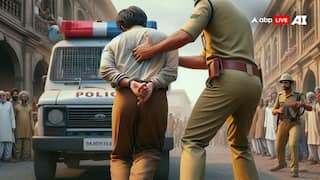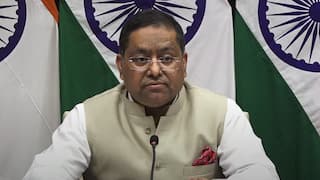Iranian President Raisi Dies In Helicopter Crash: A Look At Iran's Poor Aviation Record
Iran's aviation safety is under scrutiny after a helicopter crash killed President Raisi and Foreign Minister Abdollahian. Notably, Iran has had a record of poor aviation safety.

Iranian President Ebrahim Raisi and Foreign Minister Hossein Amir Abdollahian were declared dead by the state news agency on Monday following a helicopter crash near the Azerbaijan border on Sunday night. Drone footage, released by the Red Crescent and shown on state media FARS News Agency, revealed the crash site on a "steep, wooded hillside, with little remaining of the helicopter beyond a blue and white tail".
Raisi was travelling in Iran's East Azerbaijan province with a convoy of two other helicopters. The state TV reported a "hard landing" near Jolfa, a city on the border with Azerbaijan, approximately 600 km northwest of Tehran.

How The Crash Happened
A Turkish drone identified heat sources suspected to be the helicopter's wreckage and shared the coordinates with Iranian authorities, Anadolu news agency reported. The state news agency IRNA stated that President Raisi was flying in a US-made Bell 212 helicopter, which had to make an emergency landing due to "bad weather and fog".
CNN's military analyst Cedric Leighton noted that difficulty in obtaining spare parts for the helicopter might have contributed to the crash.
The helicopter, carrying Raisi, Abdollahian, and other officials, lost contact approximately 30 minutes into the flight, prompting a massive search and rescue operation. Deputy Foreign Minister for Economic Diplomacy Mehdi Safari managed to speak with Raisi via phone from the downed helicopter, Iranian state media reported.
Pir-Hossein Kolivand, head of the Iranian Red Crescent, confirmed that 73 rescue teams, including army, Revolutionary Guard forces, and police units, were deployed near the village of Tavil in East Azerbaijan province.

READ | Ali Khamenei Appoints First VP Mohammad Mokhber Acting President Of Iran After Ebrahim Raisi's Death
Iran's Poor Aviation Record
It is to be noted that the Bell 212 model has not been sold to Iran since the 1979 revolution. The most recent crash of this model occurred in September 2023, when a privately operated aircraft crashed off the coast of the United Arab Emirates. The last Iranian crash of this type was in 2018, killing four people. According to the European Union Safety Agency, the Bell 212 can carry 15 people, including the crew, and is used for transporting passengers, aerial firefighting, and cargo.
Iran's aviation sector has struggled due to aging aircraft and the impact of US sanctions, which have hindered the purchase of new planes and spare parts. Many military aircraft still date back to the 1979 revolution. Nearly 2,000 Iranians have died in plane crashed since then, as reported by Al Jazeera.
The Aviation Safety Network has recorded 22 air accidents in Iran since 2000. Since 1919, the ASN has noted 152 air accidents in Iran, more than any country in the region.
One of the worst accidents was the Ukraine International Airlines (UIA) disaster on January 8, 2020, when flight PS-752 crashed after taking off from Tehran, killing all 176 on board. The cause of the crash is still debated, with initial reports suggesting an engine fire, but later intelligence indicated it was likely hit by a missile.
The UIA crash is the worst in Iran since February 2003, when 275 people died after a Russian-built Ilyushin II-76MD crashed near Kerman during strong winds.
The death of President Raisi comes amid escalating tensions in the region. Iran has been retaliating against Israeli airstrikes and backing Hezbollah's conflict with Israel.
Why Politicians Use Helicopters Despite History Of Crashes
Raisi's death has drawn attention to the risks associated with helicopter travel, a mode of transport often used by world leaders despite its safety concerns. Raisi's death adds him to a list of notable figures who have died in helicopter crashes, including US basketball player Kobe Bryant, former Lebanese Prime Minister Rashid Karami, and former Chilean President Sebastian Piñera.
The Preference For Helicopters:
Despite the risks, helicopters remain a popular choice for many politicians. FirstPost citing aviation experts mentioned four primary reasons for this preference:
1. Accessibility: Helicopters can land in locations inaccessible to cars or planes, which require runways. This flexibility is particularly useful during election campaigns and other time-sensitive events.
2. Time Efficiency: Helicopters save major travel time, making them ideal for leaders to visit multiple locations quickly.
3. Cost And Capacity Options: Helicopters offer a range of options at various price points. A twin-engine helicopter can carry 10-12 passengers, while a single-engine one can carry 6-7. In contrast, even the smallest charter planes accommodate at least 20 people and are more expensive. In India (as per the FirstPost report), the cost of chartering a helicopter is around Rs 1.5 lakh per hour, compared to Rs 4.5-5.25 lakh per hour for a small charter plane.
4. Operation Flexibility: Helicopter operators fall under the non-scheduled operator (NSOP) category, meaning they are not bound by strict schedules like commercial airlines.
Helicopter Safety
While the exact cause of Raisi's crash remains under investigation, the incident raises questions about helicopter safety. Some argue that helicopters, which have been described as "absurd" machines by howstuffworks.com, are inherently unsafe.
However, data suggests that helicopters are relatively safe. The US Helicopter Safety Team reported a fatal accident rate of 0.72 per 100000 flight hours for all helicopters in 2018, compared to 1.029 for general aviation. In Europe, helicopter accidents decreased from 103 in 103 to 43 in 2017, according to the International Helicopter Safety Team (IHST).
READ | Ebrahim Raisi Chopper Crash: YSR To Gen Rawat — Prominent Indians Who Died In Helicopter Crashes
Trending News
Top Headlines






































